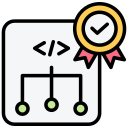Build Your First App the Lean Way
Create a simple data table, a clean form to capture entries, and one automation that posts a notification. Resist extra features until real users confirm what would actually help next.
Build Your First App the Lean Way
Name fields clearly, choose stable keys, and avoid cramming multiple concepts into one column. Keep room for change by using optional fields and lookup tables rather than hard-coding categories.







